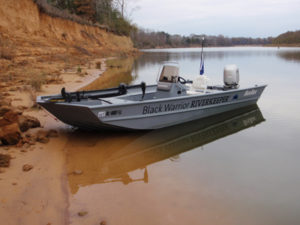From Grassroots to Great Success

Published on October 29, 2018, at 4:19 p.m.
by Anna Claire Toxey.
Growing an organization is generally not an easy task, and often proves to be especially difficult for nonprofits. From lack of public awareness to funding deficits, nonprofits can struggle when starting as small grassroots organizations. However, with the implementation of well-developed communications strategies, many nonprofits are able to effortlessly overcome these initial hindrances and become successful, widely recognized organizations.
Two Alabama conservation nonprofits experienced this success over the years as they learned to continuously develop and adapt their public relations work.
More than 20 years ago, Freshwater Land Trust was established with the goal of conserving land in the state of Alabama. The organization not only conserved land, improved water quality and established numerous trails over time, but it has also attracted a large number of supporters along the way.
Similarly, Black Warrior Riverkeeper, a citizen-based nonprofit, was founded with the mission “to restore the Black Warrior River and its tributaries.” What started as an organization with a simple premise grew into an organization that now protects the entire Black Warrior River watershed, which spans 17 Alabama counties and is home to more than 1 million people.
The driving force behind the success experienced by both organizations can be attributed to adhering to a few simple practices.
Educate your audience
One of the greatest keys to developing engaged and supportive publics is to continuously educate them. Whether it be reminding them of the organization’s mission or updating them on the internal work taking place within the organization, keeping publics informed is crucial to the success of nonprofits.

“If we’re not informing the public about the good work that we’re doing, then we will cease to exist pretty quickly because we will not get the donations we need to continue,” said Charles Scribner, Black Warrior Riverkeeper executive director.
Many times, some of a nonprofit’s most important work is completed internally. Conducting research, analyzing water quality and meeting with stakeholders are some of the tasks that Scribner said the Black Warrior Riverkeeper staff completes weekly, but they are often the things that go unnoticed by supporters.
While frequently updating publics regarding internal organizational activities is not always necessary, it is undoubtedly instrumental in securing the support needed to sustain nonprofits.
“We rely on predominantly membership donations, so as we tell the public what we’re working on, we’re essentially giving them that level of transparency of showing them what their investment is doing in the community,” Scribner said.

Understand your audience’s needs
Different people prefer different things. Therefore, it is important for nonprofits to keep in mind that all publics cannot be effectively reached by the same tactics.
Mary Beth Brown, Freshwater Land Trust communications director, noted the importance of meeting the needs of each of the organization’s audiences through the implementation of very specific tactics.
At Freshwater Land Trust, Brown and her fellow staff members aim to satisfy supporters by hosting a variety of events tailored to specific interests. From endangered species events to trail development events and more, Freshwater Land Trust ensures that it provides something for all publics through its programming.
At the end of the day, Brown said that it’s important to ask yourself, “Are we reaching them? Are we giving them the content that they want?” when determining if an organization is truly connecting with publics in a meaningful way.
Keeping these two questions at the forefront of programming and communication initiatives is imperative to ensuring the satisfaction of nonprofit supporters.
Strive for advancement
Change is ever-present in today’s communications landscape. Social media platforms, traditional media outlets and other core communication components all alter the communication methods of organizations.
Both Scribner and Brown acknowledge that adapting to changing industry trends is important to the continued success of their respective nonprofit organizations. Scribner said that while many of Black Warrior Riverkeeper’s traditional communication tactics have remained the same, other tactics and parts of the organization’s message have changed over the years.

“I think biologically speaking that clean water will have to remain relevant to human beings for the rest of our existence,” said Scribner. “I don’t think the basic premise of our work will ever become irrelevant, but surely we will need to keep track of different technologies … in order to get our message across…”
However, succeeding in nonprofit communication is about more than just adapting to change and using the newest tools and technologies, according to Brown. It is about analyzing whether practices are truly providing advancement that is beneficial to the nonprofit.
“Every year we assess what’s working and what we could be doing better,” she said. Periodic assessments of the results from specific strategies and tactics are crucial to ensuring the continued development of a nonprofit.
Sustaining a nonprofit is by no means a simple task, especially in the world of conservation. It takes hard work and perseverance, but when sustainability is achieved, it is mutually beneficial for the nonprofit and environment alike.




